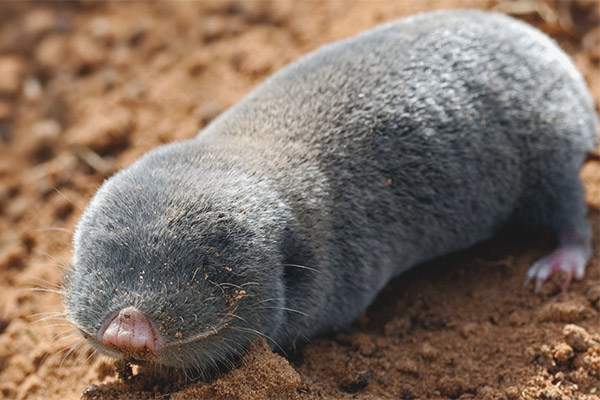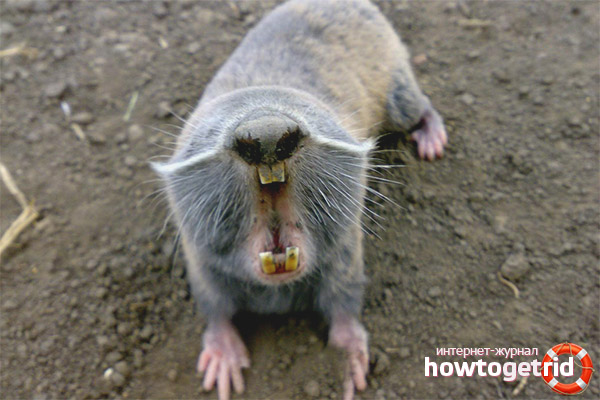The content of the article
In today's article we will study a representative of the family of blind people, who is ranked as a squad of rodents. The mammal is somewhat similar to the mole, but a fully atrophied visual apparatus makes these individuals unique in their own way. They are distinguished by the ability to dig the ground, not through claws, but with their teeth. Plowed up land is larger in size than that of moles; in fact, according to this aspect, many farmers distinguish these animals. But let's not get ahead of ourselves, we will study everything in order.
Lifestyle
- Animals have incisors, and large enough in size. Moles do claws when digging the ground. After the activities of the individuals represented, piles of soil remain. They can reach 50 cm in size and more. Moreover, the weight of the pile is about 9 kg. On one hectare can simultaneously live 4-20 members of the family.Rodents are most active in spring. They rest in the winter season and in the summer, however, they do not sink into hibernation.
- The labyrinths left from these animals are intricate and quite interesting. They have many tiers, each of which is intertwined with the other. The upper zone is allotted for food, it can be located at a depth of up to 30 cm. Animals get food in this tier. They collect roots and tubers. The second tier is assigned for the construction of dwellings for future offspring. Also here is a storage room, in which individuals can put all the most valuable. The second tier is deep underground - within 3.5 m.
- In winter, individuals close the entrances to the tunnels with the help of the ground. Mammals live here until it gets warmer. By area, the entire structure of the labyrinths can take up to half a kilometer. On the territory there are about 8-10 storerooms for food. Stocks for the winter season are about 10 kg by weight. Animals are thrifty and voracious, especially in cold seasons.
- These individuals are characterized by a single character stay. Each member of the family protects their possessions, protects them.Sometimes individuals of male sex belong to a fight, which ends in death. As for the duration of existence, animals live to 8 years, sometimes longer.
- Farmers do not like blind men because they cause significant damage to agricultural activities. It is easy to find out that a representative of the family started in the territory. There will be many different slides of the earth at a certain distance from each other. In addition to the deterioration of the appearance of the site blindies threaten the harvest. They eat tubers and roots. Particularly often, potatoes, beets, corn, carrots, beans, etc. suffer. During the day, the animal consumes about 5 bushes of root crops.
- When blind dogs settle in their chosen land, they are difficult to expel. Usually people dig up sites, but this does not give a 100% guarantee. It is important to dig 0.5 meters or more in depth to destroy the forage tier of individuals. Some use repellents in the form of essential oils and other substances, their individuals do not tolerate.
- Enthusiasts catch animals by hand. They find the first entrance and the second, after which they dig up a segment between these zones.Since the dandruff will try to eliminate the drafts, they will come out, then you will be able to catch the pests. Some people simply mix water with clay and pour it into their passages.
External signs
- It is noteworthy that the individuals in question cannot boast much of their visual appeal. These animals strongly stick their teeth forward. The body is very elongated. And it is quite large in comparison with other gadflies. An adult can grow up to 35 cm in length. In this case, body weight is about 1 kg.
- The treated animals do not have eyes. There are even no ears on the face. Such individuals resemble incomprehensible creatures, which are most often shown in American horrors. However, it should immediately be said that the animals presented are absolutely harmless. They cannot even harm anyone and protect their lives.
- It is interesting that especially young blind men are powerless against natural enemies. Most often, foxes, cats, and birds of prey perform in their roles. Often the color of such animals is monotonous. It is noteworthy that fleas live in the fur of a mole rat and they are also blind.
- The animals discussed are often called small all-terrain vehicles. They are able to quickly move through their labyrinths, both backwards and in front. If a mole member needs to roll over, he does it very quickly, turning over through himself.
Breeding
- Presented animals prefer to lead exclusively solitary lifestyle. Individuals can intersect with each other only in the mating season.
- At such a time, rat worms form even whole groups. At the same time, it has 1 male and 2 females. After mating, about 2-3 babies are born.
Status
- Giant rabies are a rare type of animal. The sad thing is that every year the number of individuals gradually decreases. The problem is that they rarely produce offspring. This happens only once every 2 years. Most of the young die in the first year of life.
- In addition, the population is declining due to the fact that people constantly plow the land or graze livestock. The construction of various channels also adversely affects the number of species. The considered individuals are listed in the Red Book as an endangered species.
Giant rabies are considered amazing animals. They do not belong to the subspecies of moles, since the latter are insectivorous. The individuals in question are rodents. Therefore, do not confuse such animals with each other. Blind spots are on the verge of extinction, and there are very few individuals left on earth. Although they are under protection, their numbers still do not increase.
Video: giant mole rat (Spalax giganteus)












To send